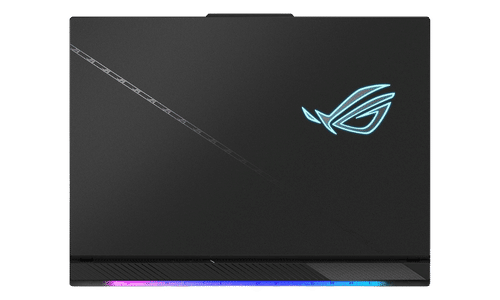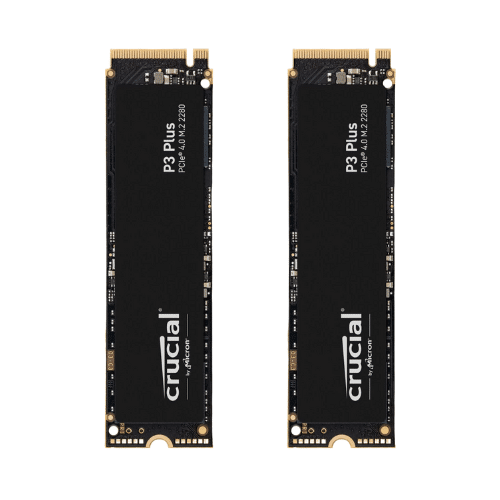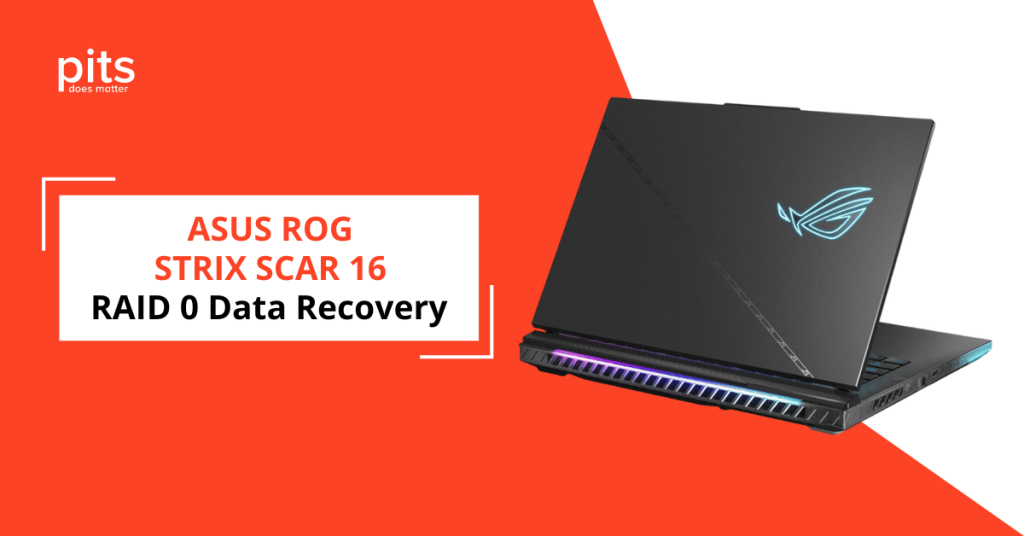Data loss on a gamer’s beloved ASUS ROG Strix SCAR 16 laptop can be a nightmare. Not being able to boot up the device and losing all your precious gaming data is a situation no one wants to be in. However, with our team of experts, we can assure you that there is hope for data recovery, even in the most challenging cases.
In this case study, we will discuss a real-life scenario where an ASUS ROG Strix SCAR 16 user faced a similar issue, and our team successfully recovered their data. We will dive into the details of the device, what caused the problem, and how we were able to recover all the lost data.
How RAID 0 Fail in ASUS ROG Strix SCAR
A regular gamer from Atlanta experienced a critical issue with his ASUS ROG Strix SCAR 16 laptop. He had configured his computer in a RAID 0 setup, utilizing 2 SSDs to enhance his system’s performance and storage capabilities.
One day, when he tried to power on his laptop, he faced a significant challenge—it would not boot. Despite repeated attempts, the system failed to progress past the initial startup phase, leaving him unable to access his data and games.
The gamer had stored all his games, saved data, and other critical files on the SSDs configured in RAID 0. He was not ready to consider losing these files, so he had to find a way to recover them.
After conducting a careful search, the gamer realized the delicate nature of RAID 0 configurations and understood that attempting DIY recovery might further jeopardize his files.
In RAID 0, if one drive fails, the data on both drives becomes inaccessible. Data loss in RAID 0 is more severe than in a non-RAID setup, as the data fragments are spread across both drives.

Aware of the risks involved in resolving the issue himself, he decided it was best to seek professional help. Following a quick Google search, he contacted our data recovery services.
Upon contacting us, we understood the urgency and the critical nature of his situation. We immediately instructed him to send his device to our lab for a thorough evaluation and potential data recovery. To facilitate this process, we provided him with a shipping label within a minute of confirming his details.
"*" indicates required fields
Evaluation of the ASUS Laptop in the Lab
Upon receiving the device, our team of experts immediately began evaluating it. Our first step was to check if the laptop’s BIOS could see the SSDs. Unfortunately, we discovered that none of the partitions were visible.
Our next step was to remove the laptop’s SSDs and connect them directly to our data recovery machines. After running a few diagnostic tests, we determined that one of the SSDs had failed, causing the RAID 0 setup to become non-functional.
Further examination revealed that the failed SSD had bad sectors, which prevented it from functioning correctly. In such a case, RAID 0 would not be able to access data from either drive, leading to complete data loss.
After identifying the cause of the issue, we provided our client with a detailed price quote for data recovery.
We also explained the process and the potential outcome to ensure complete transparency. Once he approved our quote, our team proceeded with recovering his data.

ASUS ROG Strix Laptop Data Recovery in Cleanroom
To ensure maximum data recovery success, we performed the process in a cleanroom environment. A cleanroom is a controlled environment with minimal dust particles, moisture, and contaminants that can damage sensitive electronic devices and components.

The initial step to recovering data from the failed SSD with bad sectors was to create a sector-by-sector clone of the disk. Although this process is time-consuming, it is crucial for preventing further damage to the original data.
Our technicians employed a specialized disk imaging tool designed to navigate around the bad sectors. This tool attempts to read each sector multiple times, using advanced algorithms to reconstruct the data from partially readable sectors.
Once a complete clone of the failed SSD was obtained, our attention shifted to the RAID 0 architecture. A RAID 0 setup splits data evenly across two or more disks with no redundancy; hence, the recovery process requires reconstructing the RAID parameters.
By analyzing the clone, our team was able to determine the RAID 0 configuration, including strip size and disk order. We then used specialized software to virtually combine both disks and present the data as a single logical volume.
The last step was to extract all the recovered data from the virtual RAID 0 setup and transfer it onto a new external drive for a remote file verification session. The process took approximately four hours, after which our technicians began examining the recovered data for any potential issues or errors. We were pleased to find that all the data was fully recovered and intact.
Data Transfer to New External SSD
Following the successful data recovery, we arranged a remote customer file verification session. During this session, the customer was given secure online access to the recovered files to confirm their integrity and completeness.
Satisfied with the recovery outcomes, the customer then requested that we transfer his files onto a new storage device. Our technicians commenced the transfer of the recovered data to the new external SSD.
The transfer was completed seamlessly, with all files systematically organized on the new SSD. After the data transfer we securely shipped the new drive back to the customer with his ASUS laptop.
Preventing Data Loss in ASUS RAID 0 Setups
RAID 0 configurations are common among gamers and other users who require high-performance and large storage capabilities. However, as demonstrated in this scenario, this setup poses a significant risk of data loss. To prevent such issues from occurring in the future, it is essential to back up critical data onto a separate storage device regularly.
Additionally, it is crucial to consult professional data recovery services in case of any issues with RAID 0 setups. DIY recovery attempts can often worsen the situation and lead to complete data loss. Professional data recovery experts have the necessary tools, expertise, and cleanroom environment to
So, if you find yourself in a similar situation, do not hesitate to contact us for professional and reliable data recovery services for ASUS laptops. Remember, DIY methods may further damage your drives and result in complete data loss. Trust the experts for all your data recovery needs.
Frequently Asked Questions
Is it possible to recover data from any ASUS ROG Strix laptop experiencing SSD failure?
Yes, recovering data from a failed SSD on an ASUS ROG Strix laptop is possible with the right tools, expertise, and techniques. Professional data recovery services can help salvage data in such situations.
Do I need a cleanroom environment for data recovery on my ASUS ROG Strix laptop?
Recovering data in a cleanroom environment is crucial for preventing further damage to the failed drive. It is highly recommended to seek professional data recovery services with access to a cleanroom for successful data retrieval.
Can I recover my RAID 0 setup on my own?
Attempting DIY methods for recovering data from a RAID 0 setup can result in further damage and complete data loss. It is best to seek professional assistance for such complex and delicate data recovery procedures.
What should I do if I experience a RAID 0 failure on my laptop's SSDs?
If you encounter a RAID 0 failure, it’s crucial to stop using the device immediately to avoid further data loss. Contact a professional data recovery services for professional assistance. Attempting DIY recovery may exacerbate the problem.
How long does data recovery take for a RAID 0 setup on a laptop?
The duration of the data recovery process for a RAID 0 setup can vary depending on the complexity of the failure and the condition of the SSDs. After evaluating your device, we’ll provide you with an estimated recovery timeframe.
How much does RAID 0 data recovery cost?
The cost of RAID 0 data recovery varies based on the failure’s complexity and the required resources for a successful recovery. After an evaluation, you will get a detailed quote.
